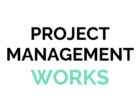Are you implementing new techniques in your business? To ensure your employees change how they work it isn’t as simple as just telling them what to do.
Employees are an organisation’s best asset so by investing in the workforce you’re effectively investing in the business. One way to ensure employees remain productive and satisfied in the workplace is to offer learning and development opportunities.
By fostering a culture of learning in your organisation, there is a better chance that when new techniques, new processes or new roles are introduced, staff will quickly and willingly get up to speed with a new way of working.
One area where this will become increasingly important is in the green jobs / green economy as the world strives for net-zero. Green jobs have been described as “jobs that facilitate meeting net zero and broader environmental goals”, according to a report by the economics consultancy WPI Economics.
Investment will need to be directed towards re-training current employees to develop the relevant skills that will be needed in the future. Businesses and employees will only benefit from the opportunities presented by the green economy if people are equipped with the right skills. Supporting staff with learning and developing is important if they, the business and the customer are to all benefit.
Here are some areas to consider when training staff on new techniques.
Learning styles
First and foremost, you must understand how your employees learn and shy away from a one size fits all approach. Each individual has a learning style which, if used, can yield results quickly, resulting in a confident and self-assured staff member. Making sure training aligns to employee preferences for learning also helps the organisation – training programs that do not meet employee requirements can be a waste of both time and money, not to mention demoralising for the individuals concerned.
Staff who are being trained using a method that is not suited to them may become frustrated if they are not understanding things quickly and can start to question their value and role, thus impeding work quality and productivity. People can be either a kinaesthetic, auditory or visual learner or a combination of more than one style.
On the job
We all know that mistakes offer the best opportunity for learning and this is never more true than in the workplace. Instead of delivering training in a classroom-type setting, handing out manuals or asking staff to watch videos, there is also the option of letting people figure it out for themselves – with the right direction of course. This approach is derived from the 70:20:10 model of learning and development which argues that 70 percent of lessons are learned through doing, 20 percent via other people and 10 percent from attending courses.
Mistakes also allow for team members to come together and discuss what went well and what didn’t, and how they might work together to improve future activity. Take this approach a step further and if you have someone with facilitation skills in your organisation, allow them to lead a workshop to collate employee feedback and ideas for solutions.
Logistics
Timing of new training is important. Managers should consider what days/periods offer maximum opportunity for learning. For example, Monday mornings and Friday afternoons should be avoided as staff will have other things on their mind. It is also a good idea to have scheduled breaks during training.
Large scale
If new processes are likely to impact the organisation on a large scale rather than just a single department or one part of a process, investing in professional training can really save you time and money in the longer term.



